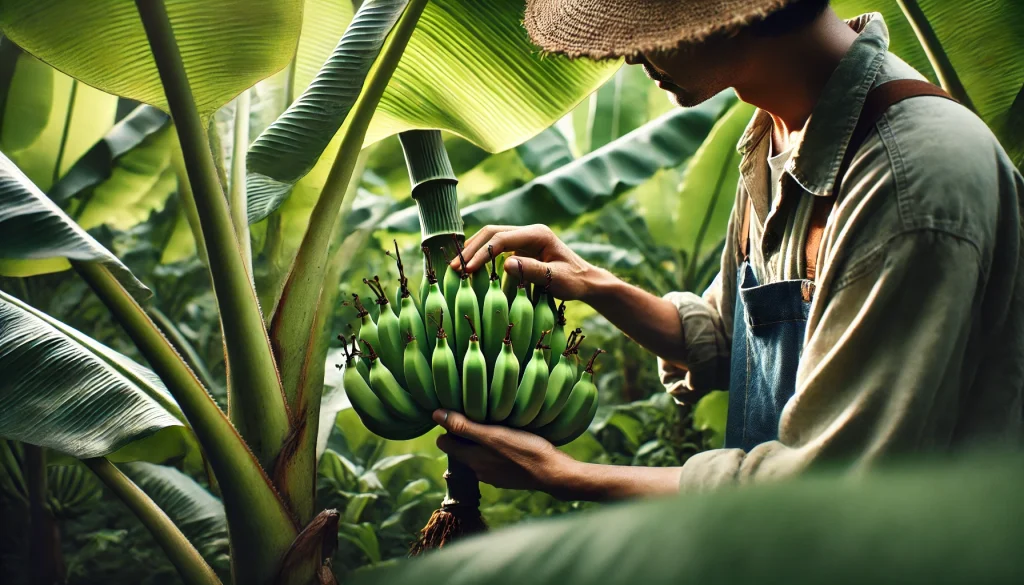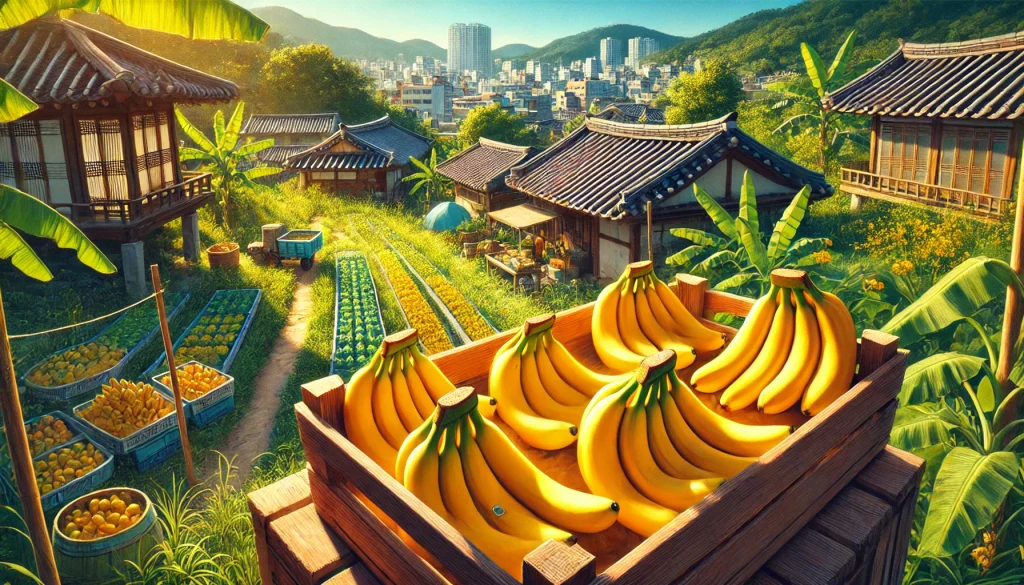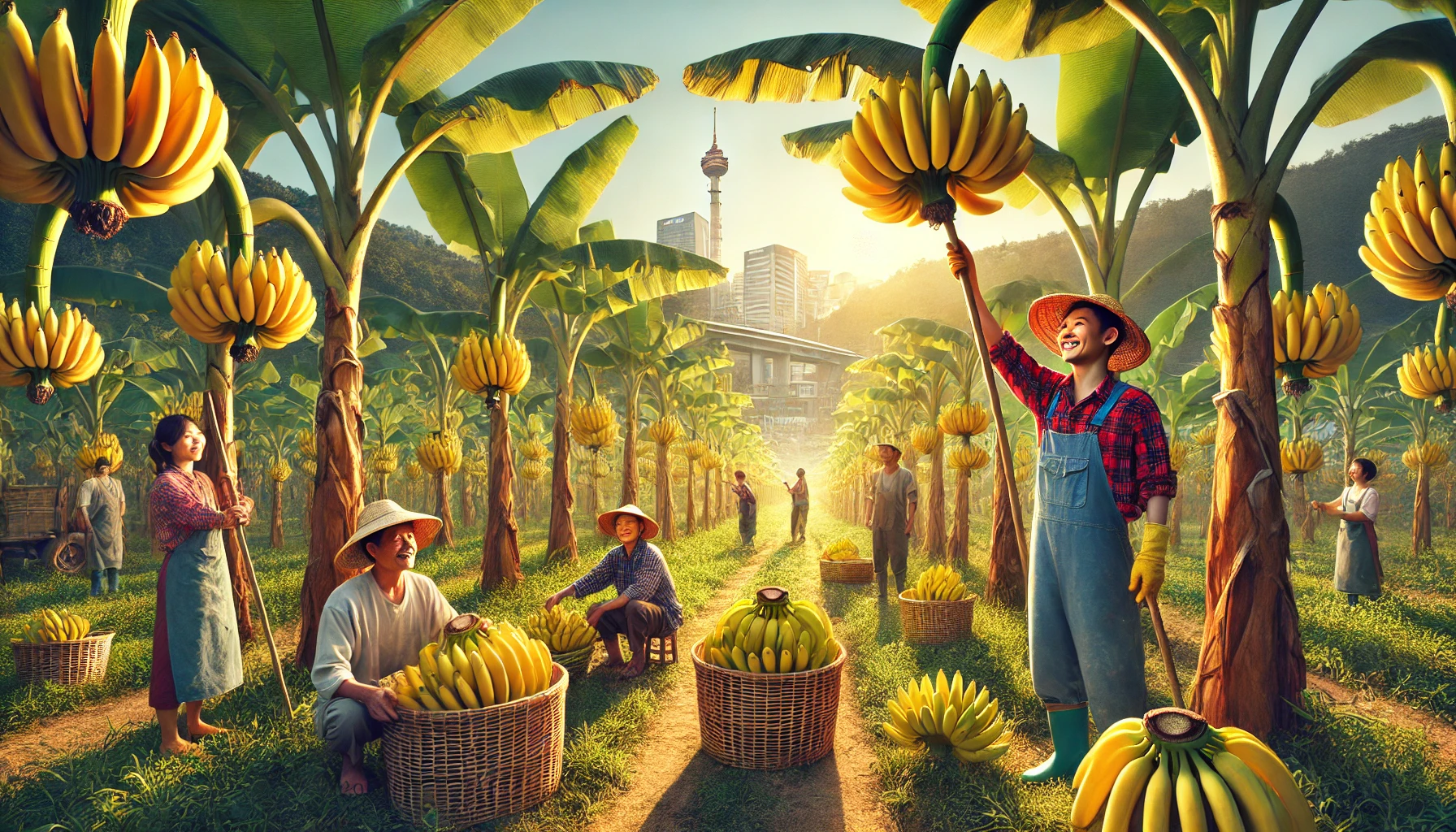Introduction
As temperatures rise due to climate change, South Korean farmers are experimenting with tropical crops, including bananas. This shift highlights both the challenges and opportunities brought by global warming. In Seoul, farmers like Ma Myung-sun are finding success with these unconventional crops, showcasing adaptability and innovation in agriculture.
What Happened
South Korean farmers have started cultivating tropical bananas, a crop traditionally grown in warmer climates. Ma Myung-sun, a 73-year-old farmer in Seoul, planted bananas on his community farm. Warmer temperatures have enabled these plants to flower and bear fruit, a surprising yet welcome development. The successful harvest of bananas represents a significant milestone for local agriculture.
For more details, watch this video:
When and Where

The shift towards tropical crops began in recent years, with a significant increase in cultivated areas from 2021 to 2023. The Paris 2024 Olympics highlighted these changes, as farmers like Ma Myung-sun demonstrated the viability of banana cultivation in Seoul. These efforts are part of a broader trend as South Korea adapts to its changing climate.
Who is Involved
Key individuals include farmers like Ma Myung-sun, who transitioned part of his pear farm to banana cultivation. Additionally, the Rural Development Administration has supported these efforts by providing resources and guidance. Agricultural scientists, such as Kim Kwang-soo from Seoul National University, play a vital role in researching suitable crop varieties for the changing climate.

Why It Matters

This development is significant for several reasons. It demonstrates the adaptability of South Korean farmers to climate change, showcasing their resilience and innovation. Successfully growing bananas locally reduces the need for imports, offering economic and environmental benefits. Furthermore, it highlights the broader impacts of global warming and the need for sustainable agricultural practices.
Increase in Cultivated Area for Subtropical Crops in South Korea
| Year | Area (hectares) |
|---|---|
| 2021 | 295 |
| 2022 | 1,500 |
| 2023 | 3,306 |
Conclusion
The success of Seoul farmers in growing tropical bananas amidst rising temperatures is a testament to their adaptability and innovation. This development not only benefits the local economy but also highlights the urgent need to address climate change. As South Korea continues to adapt to these changes, it serves as a model for sustainable agriculture and resilience.
FAQ
Why are South Korean farmers growing tropical bananas?
Warmer temperatures due to climate change have made it possible to cultivate tropical bananas in South Korea. Farmers are experimenting with these crops to diversify their produce and adapt to changing conditions.
What are the benefits of growing bananas locally in Seoul?
Growing bananas locally reduces dependency on imports, offers fresher produce to consumers, and provides economic benefits to local farmers. It also helps in reducing the carbon footprint associated with importing tropical fruits.
What challenges do farmers face in growing tropical crops in South Korea?
Farmers need to manage the cold winters by using greenhouses and other protective measures. Additionally, they must adapt their farming practices to accommodate the new crops and ensure successful harvests.
References
- BusinessWorld Online. (2024). As temperatures rise, South Korean farmers experiment with tropical bananas. Retrieved from https://www.bworldonline.com/world/2024/08/06/612409/as-temperatures-rise-south-korean-farmers-experiment-with-tropical-bananas/
- Manila Times. (2024). Rising temperatures make it possible for Seoul farmer to harvest bananas. Retrieved from https://www.manilatimes.net/2024/08/06/videos/rising-temperatures-make-it-possible-for-seoul-farmer-to-harvest-bananas/1962183
- US News. (2024). As temperatures rise, South Korean farmers experiment with tropical bananas. Retrieved from https://www.usnews.com/news/world/articles/2024-08-05/as-temperatures-rise-south-korean-farmers-experiment-with-tropical-bananas

